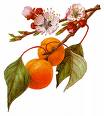Dr. Leung Jan's
Kulo Village Wing Chun Boxing
Jim Roselando, Jr.
Regarded as the Wing Chun Wong (King of Wing Chun), the great Dr.
Leung Jan gained fame for his numerous fights and for his teaching
ability. This article will discuss the concept and approach Dr. Leung
Jan used to develop his final personal synthesis of the
Wing Chun art.
Dr. Leung Jan learned the Wing Chun art from Hung Suen members
Wong Wah Bo and Leung Yee Tai. For many years he taught
Wong Wah Bo's 'Three Fist Set' art he learned out of his pharmacy,
"most commonly" referred to as Jan San Tong (Mr. Jan's Hall),
on Fai Jee St. in Futshan. Much later in his life, when
he reached the age of seventy three, he retired and moved back to
his native Kulo in Hok San County and while there released the
knowledge of the Woman's Sect Sifu, Leung Yee Tai to his native
villagers.
In Kulo, Dr. Leung Jan encountered a farmer named Wong Wah Sam.
The Wong family was not large in Kulo, nor especially liked. In
part, this was because, from time to time, Wong Wah Sam's cows escaped
and caused havoc in the village. This upset the other locals and
caused him to have many fights.
Dr. Leung Jan would take a daily walk around the village and every
day would see Wong Wah Sam practicing his Kiu Sao (Bridge Hands)
against a tree. Impressed with his diligence, Dr. Leung Jan
approached him and asked why he was training so hard? Wong Wah Sam
explained his problem. Dr. Leung Jan replied that his training was
not very useful! Wong Wah Sam demanded to know who he was to say such
a thing. When Dr. Leung Jan said his name, Wong Wah Sam recognized it
instantly and asked Dr. Leung Jan to teach him. Dr. Leung Jan told
him he would think about it and to come see him in a few weeks time.
Dr. Leung Jan new that, due to his already advanced age, if he took
any more students, he would need a simple yet effective way to teach
them. He decided on San Sik (Separate Forms), but not simply an
extract from his existing art. Rich in both fighting and teaching
experience, he decided to pass on a refined, personal synthesis of his
Wing Chun knowledge. First, he distilled some of the core motions
from his root set and then organized each layer in accordance to
three-gate design.
What Dr. Leung Jan ended up with was not odd or against orthodox Wing
Chun learning. Dr. Leung Jan simply understood the advantages and
honed them, through his experience, into a balanced art rich with Tee
& Yong (body and application). This super mini-set was to be known as
Sup Yi Do Kuen or Twelve Ways of The Fist. A benefit and goal of
this practice was that the movements were designed to be repeated over
and over so that they would eventually become a natural expression of
the practitioner's body. Combined this with Choc Sao, Chi Sao & Jao
Sao, this was the birth of Dr. Leung Jan's empty hand Pin Sun Wing
Chun boxing art!
The Pin Sun Wing Chun system consisted of thirty-six "core" San Sik,
divided into twelve sections of fighting methods (with additional
extensions, Jong Sao (Dummy Hands), and Som Dim Boon Gwun
(Three-and-a-half-Point Pole). Each of the twelve sets
contained either three actions or had three cycles, which are similar
to the actions of Dr. Leung Jan's original art. The movements and
combinations were very simple and direct, both straight and
circular, primarily in keeping with the Pin Sun methods, and were
the skills and concepts he utilized to win hundreds of fights during
his career. More than that, a specific progression was laid out to
teach attacking and defending principles. These skills could be
combined and explored in such a way the students would have a
lifetime's worth of training and development.
"It should be noted that Dr. Leung Jan did not create this system in a
two week time period! The concept for his system was developed and
the basics were laid out but indeed the art was a work in progress".
Why was the system refined so much? Through experience, Dr. Leung
Jan determined that not many different movements were used to win real
fights yet it was also the right amount to prepare the disciples for
any aspect in a real fighting situation. Also, knowing that the human
body can only move in so many ways it was Dr. Leung Jan's idea to
harness those ways thru his new platform. Why did he choose
thirty-six? Thirty-six, or three times twelve, was a lucky number in
Chinese culture.
With his system in development, Dr. Leung Jan took Wong Wah Sam as
his first disciple. Eventually he accepted Yik Ying and Leung Bak
Chung (nephew), and another Leung relative was said to have trained -
in total four final disciples! Of the three, Daisihing Wong Wah Sam
was the most well known and his teaching found a home in the Fung
family of Kulo who have been privately preserving the art for many
years.
Over the next three to four years Dr. Leung Jan taught his students
all his skills but unfortunately, due to old age, he passed away at the
age of 76 around 1901. His most senior student, Wong Wah Sam, went on
to teach Fung Chun, Fung Min, Fung Lim, Koo Siu Lung, and others the
Pin Sun Wing Chun art. Fung Chun, grand student of Dr. Leung Jan,
is now retired living back in Kulo village where he
is the head of the Fung family Pin Sun Wing Chun clan. Some of his
more noticeable pupils are Fung Chiu, Fung Keung, Fung Chu, Fung Dat,
Fung Sang, Chow Sum, Ng Chun Keung and others.
© James Roselando, Jr. 2007


